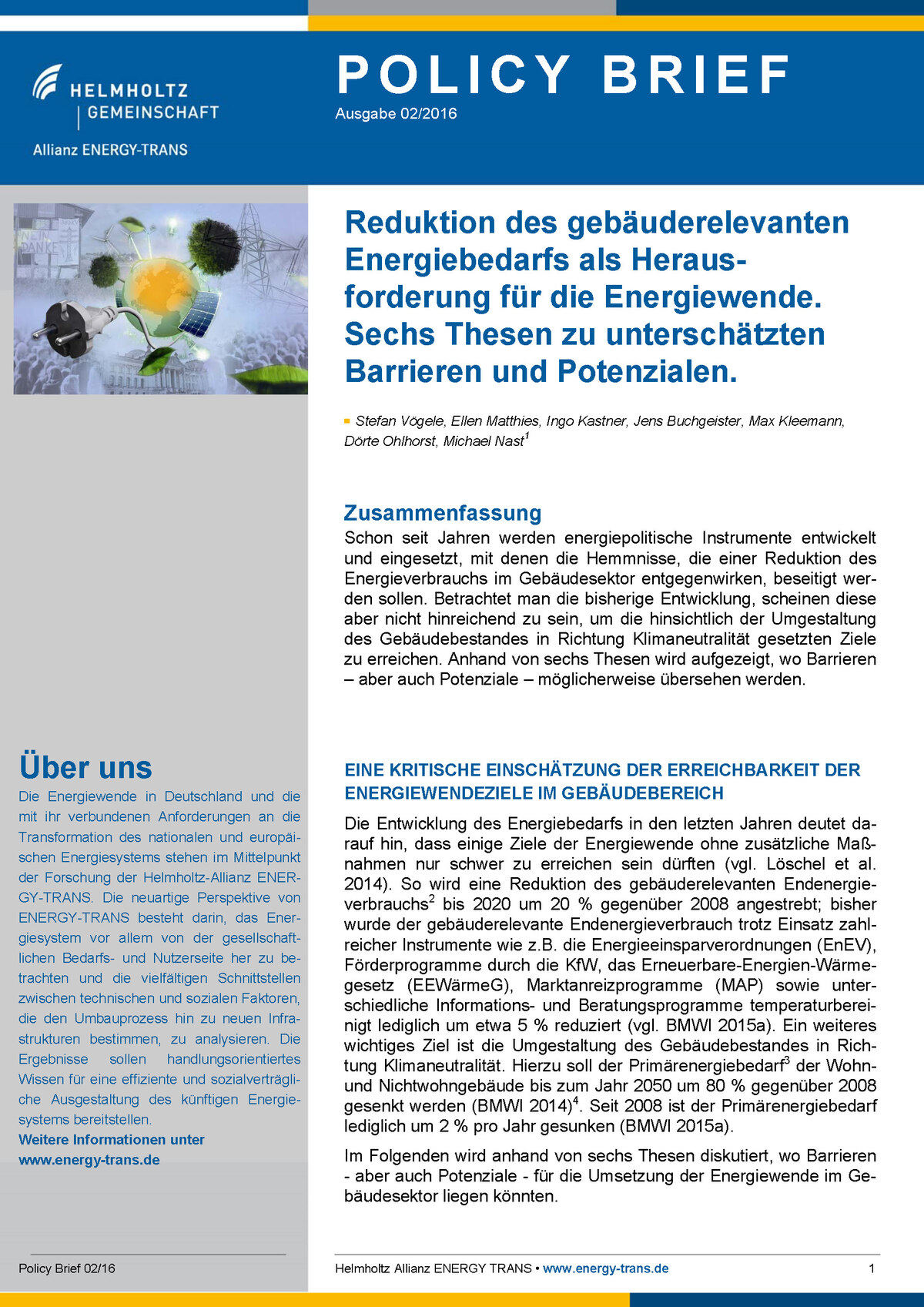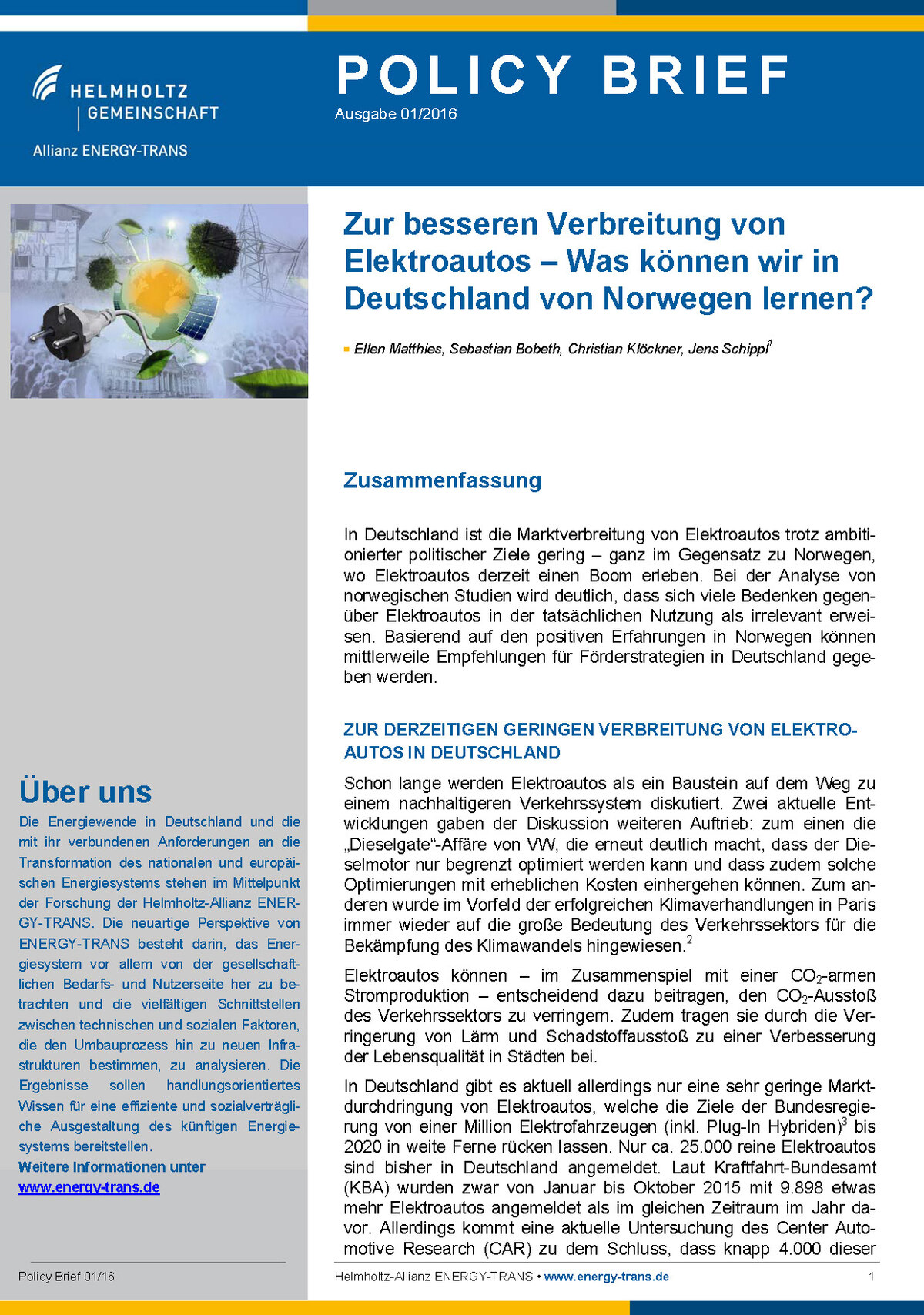Energy transition: Recommendations for mobility and heat
Not only the electricity sector, but also – and above all – the fields of mobility and heat are decisive factors on the way towards a sustainable and climate-friendly energy system that is currently pursued. Scientists from the Helmholtz Alliance ENERGY-TRANS which is coordinated by ITAS have summarized the important research results on these topics and formulated recommendations for policy makers.
Electromobility
The transport sector is contributing considerably to the energy consumption in Germany. Therefore it is often discussed that the energy transition has to be accompanied by a transformation of the transport sector. Despite ambitious political goals (1 million vehicles by 2020), the market share of electric cars is extremely small in Germany – in contrast to Norway, where electromobility is booming right now.
What we can learn from the Scandinavian model is analyzed by Jens Schippl from ITAS and his colleagues from the Universities of Magdeburg and Trondheim. Their conclusion: Many concerns regarding electric cars turn out to be of small relevance in actual use. According to the authors, "the discourse on e-mobility in Germany is full of impediments, while electromobility in Norway is suitable for daily use and very positively assessed by most of the users". The policy brief recommends, among others, a fixed-term subsidy to enable the so-called early adopters to buy and use electric vehicles.
Energy-oriented refurbishment
A main objective of the energy transition is a climate-neutral building stock by 2050. However, various measures in this field have not taken the full desired effect so far. Together with colleagues at the Forschungszentrum Jülich, the University of Magdeburg, and the German aeronautics and space research center, ITAS scientists Jens Buchgeister and Max Kleemann put the focus of their analysis on the behavior and the involvement of relevant actors.
One of their conclusions is that savings potentials are usually overrated, because often a comprehensive refurbishment is assumed while most house owners so far plan and realize energy-relevant measures only step by step. Therefore a comprehensive, foresighted, and individual planning of the refurbishment of buildings has to be encouraged to avoid partial refurbishments which often do not make sense in the long term. This has to be taken into account by support programs and must also include the social diffusion process of energy-oriented refurbishments. Otherwise the growing lack of trust regarding the actual effects of energy-related measures, such as real savings potentials, danger of mold, or fire protection, impedes the willingness to realize them. To tackle the problem, the authors recommend, for example, a better quality management such as the further education of craftspeople and the monitoring by independent building inspectors during the construction phase. (04.05.2016)
Further information:



